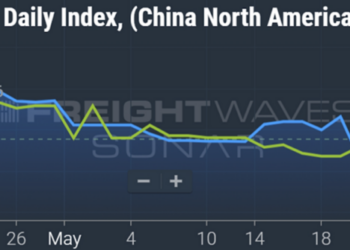The spend-crazy consumer has been both a blessing and a curse for the logistics industry. The positive is the additional volume of boxes being moved. The negative? Fraud, theft and rising logistics costs.
We have heard stories about or know at least one person who has worn an outfit with the tag on to a wedding or a one-time event only to return the item after wearing it. This is called “wardrobing.” Retailers who do not catch these used items carelessly put them back on the rack or in stock to be mailed to customers.
Recently I had a dress mailed to me which was definitely a “wardrobe” item. I took the dress off the hanger and out of the bag only to find a nasty surprise – a dirty sweat ring around the neck. Not only was I grossed out, but I vowed I would never shop from that retailer again.
Quality control in the world of retail is critical. How could that ring around the collar be missed? Easy – lack of supply chain management.
This cheating of the system can be costly for retailers. In addition to losing customers, the boom of returns can overwhelm a staff, stretching a company’s quality control bandwidth and even slowing the restocking of good items on shelves.
According to the National Retail Federation, returns have grown over the past six years.
Returns are costly if quality controls and other supply chain checkpoints are not in place.
According to a recent AlixPartners report, retailers have enacted stricter return policies to help recoup lost dollars.
“Retailers are tightening the return policies such as shortening or enforcing the return window of time and eliminating free returns just for convenience and requiring a stated defect or issue with the good/product,” said Marc Iampieri, global co-leader of logistics and transportation, and partner and managing director of AlixPartners.
Another way companies are trying to truncate the turnaround of a return and ensure quality control is through AI.
Companies like Gap Inc., American Eagle Outfitters and Best Buy are using reverse logistics AI software to quickly address the mountains of returns and get the product restocked on the shelves.
“Time is literally money,” stressed Amena Ali, CEO of the returns management software company Optoro. “The more quickly you can turn the product, the less likely of a discount. Having a smart disposition system can recover costs and maximize profitability.”
Ali said AI software can reduce the number of “touches” on a product that was returned by 50%. The more touches, the greater the added cost.
“When looking at a returned item, having an end-to-end digitized return system using AI can help identify a trusted shopper and get the like-new goods identified and restocked at full price,” said Ali. “On aggregate, 95% of goods that cannot go back to resale go to [a] secondary channel – [with 5% going to] landfill or donation.”
If the product languishes for weeks in a distribution center or warehouse, the value of the product diminishes.
“We see a wide range of numbers in terms of recovery between improvement of 5% to 45% in certain categories, depending on the brand, but this is significant money when talking to enterprise retailers,” said Ali.
According to Optoro, 30% of the cost associated with the return of a product valued at $100 is transportation. Ways to cut down these costs include using strategies such as third-party drop-offs plus boxless, labelless returns to cut the financial drain on brands and get items back in stock faster. This strategy was also recently highlighted in the AlixPartners survey.
The top three categories in which Optoro customers see returns are kitchen and dining, men’s shoes, and women’s clothing. Some customers have seen return rates as high as 40%. The average returned item value across all Optoro customers is $85. The highest returned item value was $200.
“If you take this into consideration, that the average cost of a return is 30% of the price of the item, then you can see where their profitability takes a hit with the influx of returns,” said Ali.
The post How reverse logistics can help retailers avoid ring around the collar appeared first on FreightWaves.













